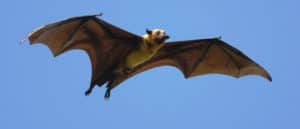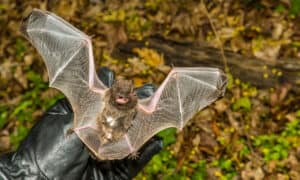Weighing a fascinating 0.07 ounces to 3.3 pounds, a member of the order Chiroptera leaves researchers astonished by its extreme lightweight. Bats, who over time have been perceived in some cultures to be scary and mischievous, are, as a matter of fact, an embodiment of positive attributes to humans and plants. It is quite interesting that, like other swift predators, bats also fall prey to some other high-ranking predators. So what predators eat bats? Let’s find out!
Background on Bats
Having the name “Chiroptera” from Greek origin, the mammal is famed for its unique structural pattern. This is so because of its four long fingers that are held together by thin layers of the patagium, thus exemplifying the meaning of its Greek name, ‘Hand Wing .’ The forelimbs of bats or wings enable them to maneuver during flight to catch their prey easily. They can fly even more quickly than most birds. There are no fewer than 1400 species of bats in the world, with a lifespan of over 30 years. This, combined with other factors, makes them the most populous group of mammals, only second to rodents. They are uniquely familiar and can be found almost everywhere globally, apart from the Polar regions. For centuries, bats have proven to be an essential part of our ecosystem, helping eliminate bugs and pollination of plants.
What Eats Bats?
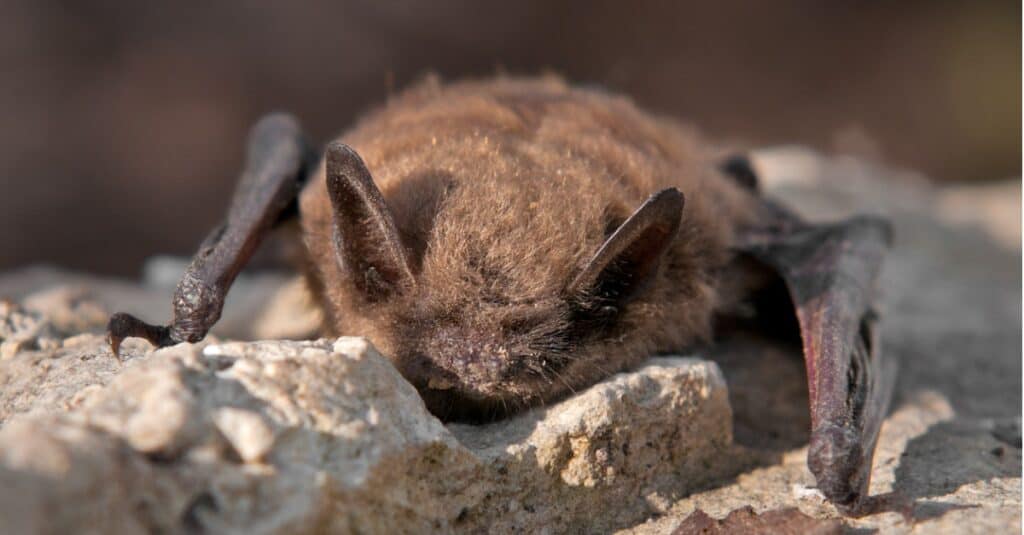
Bat predators are owls, hawks, falcons, and snakes.
©iStock.com/gkuchera
Owls, hawks, falcons, cats, crocodiles, and snakes eat bats. Despite being invaluable members of the ecosystem, bats are also feasted upon by some birds of prey and others of their top predators. With the advantage of maneuverability, bats would often cause their predators to chase, which in most cases ends in bat fatality. Let us now nosedive into explaining what eats bats.
Bats Predators: Owls
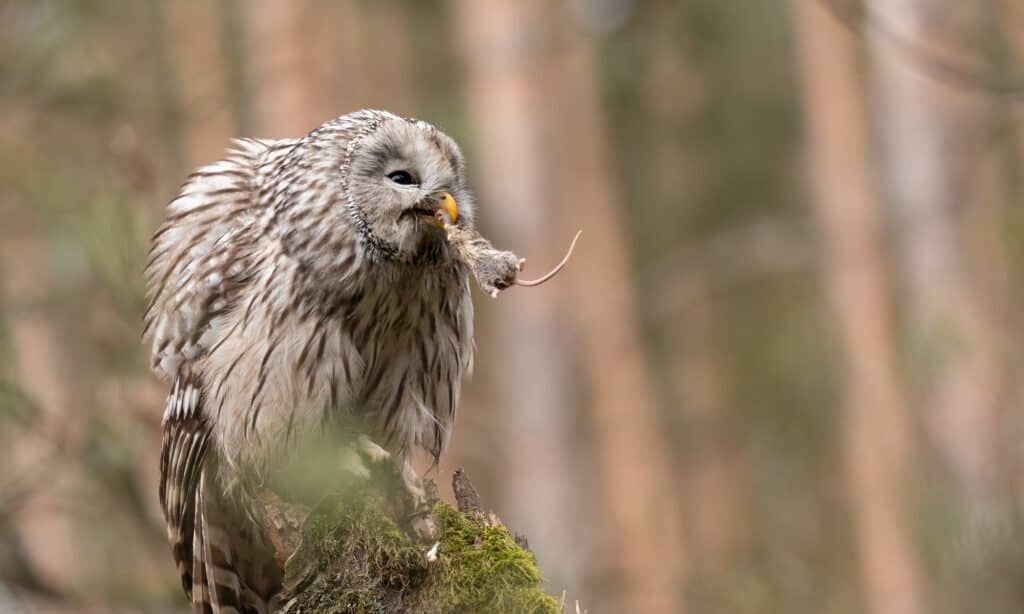
Owls are known to eat bats.
©iStock.com/sduben
Birds of prey, like the owl, are very notorious for their inherent desire in hunting and eating bats. Like bats, owls are also nocturnal, built with solid eyesight and sharp talons to grasp their prey. Owls belong to the order Strigiformes. They enjoy living in solitary and inhabit the earth with over 200 species. These birds of prey are primarily famous for keeping an upright position, a broad head for the Strigidae or typical owls, and a heart-shaped head for the Barn Owl family.
They can feel their caught prey with the aid of Filoplumes- feathers distinctly placed on the beak and feet of the owl.
Bats Predators: Hawks
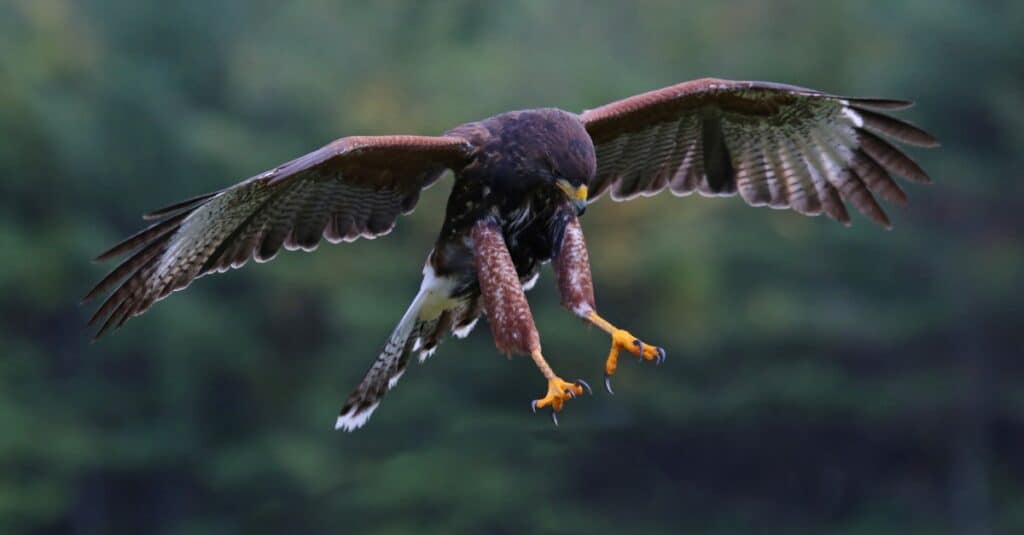
Like owls, hawks also prey on bats.
©iStock.com/ca2hill
Unlink others, hawks are intelligent birds of prey with a unique feeding and mating habit. They have perfect eyesight – because, like some other birds, they are tetrachromats, endowed with four independent channels for conveying color information. Hawks can reach high flying heights and are swift when catching their prey. They are very stern when hunting down bats – they never release their claws once they get the grasp of those bats, and they are firm until they are done eating the bats. Hawks are fierce when dealing with their prey.
Bats Predators: Peregrine Falcon
The Peregrine Falcon is one of the most common birds of prey. It has a stable population in the world except for Antarctica. Peregrine falcons are in no way endangered and are very formidable birds of prey.
They are fast-flying birds and can swiftly dive to speeds of up to 200 miles an hour to catch their prey. Peregrine falcons eat bats and find them satisfying. They also feed on songbirds, doves, waterfowl, pigeons, and waders. The peregrine falcon has often been associated with voraciousness and martial prowess due to its unique hunting adaptations.
Bats Predators: Cats
Our very own cats are a domestic species of the family Felidae. They are the only species of that family that is domesticated. Cats are carnivorous mammals that have been able to win a shared love with dogs by humans. A study reveals that cats have had a long relationship with humans, dating as far back as 3000 years ago when the early Egyptians first domesticated cats and even likened them to deities. Cats enjoy eating bats just like other small rodents. A more significant proportion of their bats’ hunt is achieved when these cats climb to where bats are roosting. Cats are relatively effective at night, with a good hearing ability and long tails to aid their balance.
Bats Predators: Crocodile
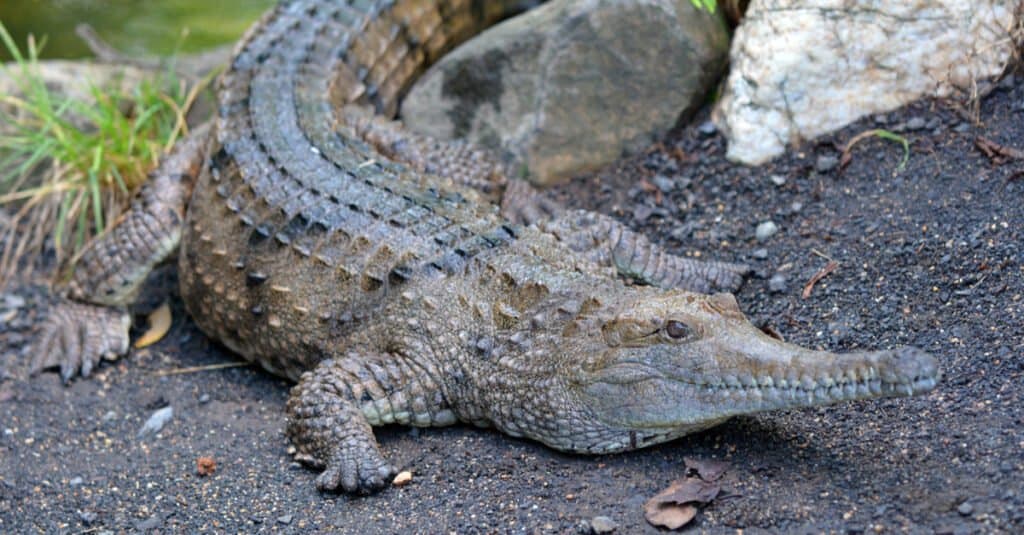
As apex predators, crocodiles eat bats.
©ChameleonsEye/Shutterstock.com
Weighing over 2000 pounds, low-flying bats are no match for the crocodile, especially when already caught between the teeth of the croc. It can be described as a case of KIA (killed in action). Crocodiles eat bats even from the comfort of the river banks where they relax; all they need is to wait for the careless low-flying bat to cross the trajectory in between the deceitfully frozen mouth of the crocodile.
Other Interesting Facts about Bats
- Megabats enjoy eating fruits, nectars, and insects, while microbats prefer feeding on cattle blood, fish, frogs, and even lizards. The nectar-eating bats help in pollination as most plants depend on this nocturnal player for their pollination.
- Megabats, primarily frugivores, help spread plant seeds as they scatter the fruit open in a bid to eat them. Other times, some seeds attach themselves to the body of the bats and fall off as they fly. This way, the bats help in paralyzing the hands of deforestation.
- Bats clean themselves up and also groom each other.
- Bats are truly invaluable to nature and farmers since they help eliminate plant bugs or insects.
- Bats are a host to various Zoonotic viruses; the Baltimore Classification System holds that bats are carriers of double-stranded DNA viruses that replicate through a single-stranded RNA intermediate, including six other distinct viruses.
The photo featured at the top of this post is © Geza Farkas/Shutterstock.com
Thank you for reading! Have some feedback for us? Contact the AZ Animals editorial team.




